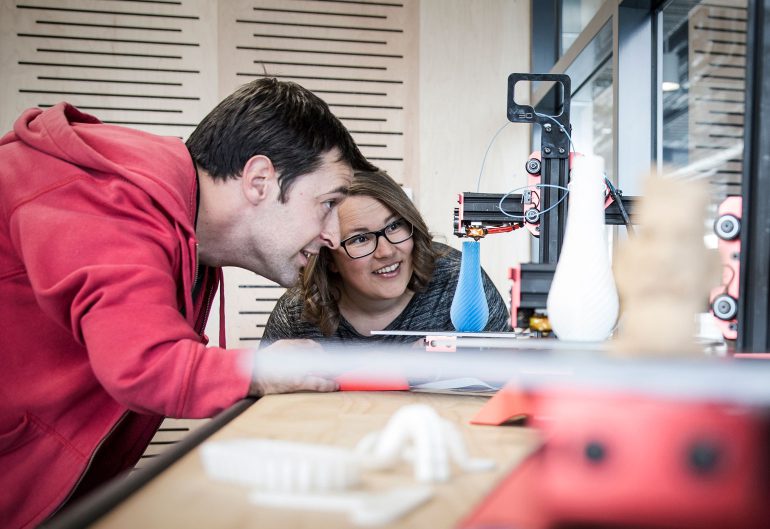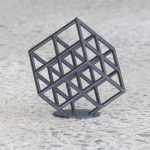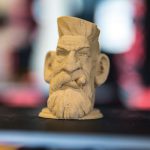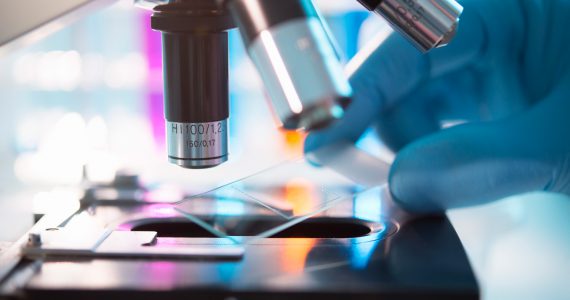A NSW startup sees 3D printing as a gateway to get students interested in STEM. They’re working to get the tech in front of as many students as possible.
It’s likely that many of the engineers of tomorrow are pulling things apart today, driven by some innate urge to poke around in the innards of mechanical things, finding out how these work by (often messy) exploration.
Whatever the exact link between disassembled appliances and a later career helping put things together, Me3D aims to encourage STEM curiosity in the young. The Wollongong-based maker of 3D printers gets this across in the “inside-out” design of their machines.

Rather than a black box turning melted plastic into tangible representations of CAD files, these built-for-learning fabricators let it all hang out.
“We wanted to sort of flip everything inside out,” co-founder and CEO Matt Connelly said.
“The scope for being able to teach engineering and mathematics and science on the actual machine itself has really opened up much more than if you stuck this in a box that was a very shiny case and made all the wire routing very pretty so that no-one even knew how the thing worked.”
The usefulness of 3D printers in stimulating young (and not-so-young) minds is not a new concept. Additive manufacturing can be fun, exciting, and can also involve every component of the STEM quadrella.
“The students really connect with the fact that is the raw material, that’s how it starts, it runs through, gets heated up, gets put down,” Connelly said, adding that exactly how the raw material is put down can bring up all sorts of interesting questions.
“We wanted the students to be able, in the next five or 10 years, to take this idea into a completely different industry.”
And though they also design printers for professional settings, the educational sector is where Me3D has directed most of its energy.
Through their Me2 offering, their very first goal was to make the world’s best educational 3D printer and to boost participation in engineering-related pursuits in the process.
Back to school
Three co-founders Matt Connelly (mechanical engineering), Leanne Connelly (economics) and Fletcher Thompson (mechatronics) are all University of Wollongong (UoW) graduates.
Following graduation in 2006, Matt Connelly went on to work at Thales’s Lithgow factory as a weapon design engineer, working on the EF88 Austeyr rifle.
From there it was on to a half-year stint at CAE as hardware engineering group leader, and then project engineer and freight solutions roles at Faiveley Transport, including time in France.

After that, he and the other founders – all of whom had worked overseas – somehow found themselves back in Wollongong, he says.
In 2012 – the year globally-respected 3D printing consultant Terry Wohlers calls the “tipping point” for the technology – the two Connellys and Thompson “began spitballing” ideas for a 3D printing business. The start-up officially began in late-2013.
Business has been growing steadily since then. In line with that, Matt Connelly has tapered off his work at Faiveley and, as of March last year, has been solely focussed on Me3D.
His first exposure to 3D printing was in 2001, during his degree, and while he was on the Team UoW Formula SAE racing group.
His links and his business’s links with the university – which is well-regarded for its bioprinting prowess – remain strong. It is based at UoW’s Innovation Campus, and is a part of its accelerator program, iAccelerate Start.
Last year Me3D won the Panel and Audience divisions of the accelerator’s Pitch Grand Final. Other awards in 2015 added to the company’s momentum include Most Disruptive Technology at Tech 23 and the CeBIT Community Support Award.
Me3D is also a part of Autodesk’s Entrepreneur Impact Program, which provides free software to companies with a social good or environmental focus.
Built for learning
At the moment, Me3D is trying to get its machines into as many schools as possible. Their count is nearly 100 at the time of writing.
“A few of those schools have got four, five, six of these printers; really, what we’re aiming for is 10 printers in a primary school to get the kids the access that they need and 25 to 30 printers in a high school,” Matt Connelly explained.
The “spitballing” stage involved trying to dream up the biggest, fastest, most feature-rich machines they could possibly make.
“We’re engineers and that’s what we do!” he confessed. The machines themselves are fused deposition modelling (FDM) based. The ‘novel-ness’ is in their appearance, aimed at exposing users to how the machines are put together, and to get them curious in this.
“We can talk about how the motors are working, where the wires go to, how the stepper motor works, all the way through to what the electronics do underneath,” he said.
“In a class you could talk about the electronics, each of the different modules, what each one does.”
Things have narrowed down from trying to make things bigger and faster to trying to ensure every kid that wants access to a machine can have it.
Bigger companies – such as Stratasys, which unveiled an “Infinite Build” concept in August – can worry about pushing the build envelope. As for ensuring every school has an FDM printer, one per library won’t do, either.
“Classrooms should provide the access as the students really need to get their projects done,” he said.
“To be able to not just make one thing, but to be able to make that same thing over and over again, getting a little bit better every time and really follow through that whole design process of prototyping through to a final product.”
Its ambition is for everybody aged five to 18 to have access to 3D printing technology.
Part of the plan to get there is their Seed3d program. Every customer purchasing a Me2 model can pledge 10 per cent of the price of a printer to a registered school. In this way, 10 people doing so will get a school a free machine.
Beyond providing students with printers, Connelly believes that anybody a bit curious should have access to one of the machines.
“We’re not just looking at education in a K to 12 sense but looking also at all education,” he said.
“The machines could help learners of all ages find their inner engineer.”











